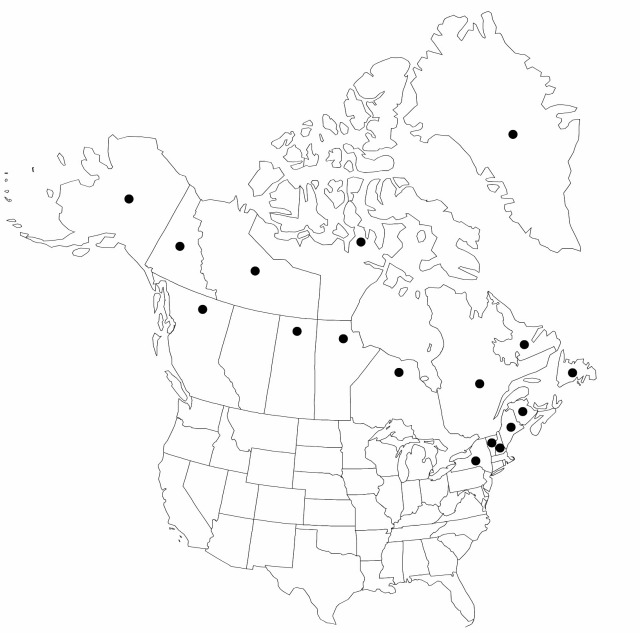Carex bigelowii
Ann. Lyceum Nat. Hist. New York 1: 67. 1824.
Plants cespitose or not. Culms acutely angled, 10–50 cm, scabrous. Leaves: sheaths of proximal leaves glabrous, fronts lacking spots and veins, apex concave; blades 1.5–4 mm wide. Inflorescences: proximal bract setaceous or foliaceous, shorter than inflorescence, 0.5–3 mm wide. Spikes erect; proximal (1–)2–3 spikes pistillate, 0.7–3 cm × 3–4 mm, base cuneate or attenuate; terminal 1(–2) spikes staminate. Pistillate scales black, equaling or shorter than perigynia, apex obtuse or acute, awnless. Perigynia ascending, green, spotted purple-black or mottled on apical 1/2, veinless, somewhat flattened, tightly enclosing the achenes, ellipsoid, 1.5–3.5 × 0.9–2 mm, dull, apex rounded or acute, papillose; stipe to 0.45 mm; beak 0–0.2(–1) mm. Achenes not constricted, dull.
Distribution

B.C., Man., N.B., N.W.T., Nunavut, Ont., Que., Sask., Yukon, Alaska, Maine, N.H., N.Y., Vt., Europe, Asia.
Discussion
Subspecies 5 (2 in the flora).
Carex bigelowii is a highly variable, circumpolar species complex with four subspecies recognized in Europe (A. O. Chater 1980). The North American populations can be divided into an eastern and a western taxon, which cannot always be distinguished morphologically. They are recognized as two subspecies of a widely ranging complex for this treatment.
Carex bigelowii appears to be closely related to the western montane C. scopulorum; it is distinguished by its narrower leaves and narrower, ellipsoid perigynia. Tall plants of C. bigelowii may be confused with C. aquatilis (especially C. aquatilis var. minor) and can be distinguished by the short bracts, hypostomic leaves, and dull achenes of C. bigelowii. These two taxa have been reported to hybridize (M. G. Duman and S. D. Kryszczuk 1958) and have been artificially hybridized by J. S. Faulkner (1973), who found that these two species were very closely related.
Selected References
Key
| 1 | Perigynia green, spotted purple-black on apical 1/2, minutely papillose; stipe 0.15–0.45 mm; proximal pistillate spike loosely flowered, base often attenuate, less often cuneate. | Carex bigelowii subsp. bigelowii |
| 1 | Perigynia green, often white at maturity, uniformly purple-brown on apical 1/2, strongly or minutely papillose; stipe 0–0.15 mm; proximal pistillate spike densely flowered, base cuneate, less often attenuate. | Carex bigelowii subsp. lugens |